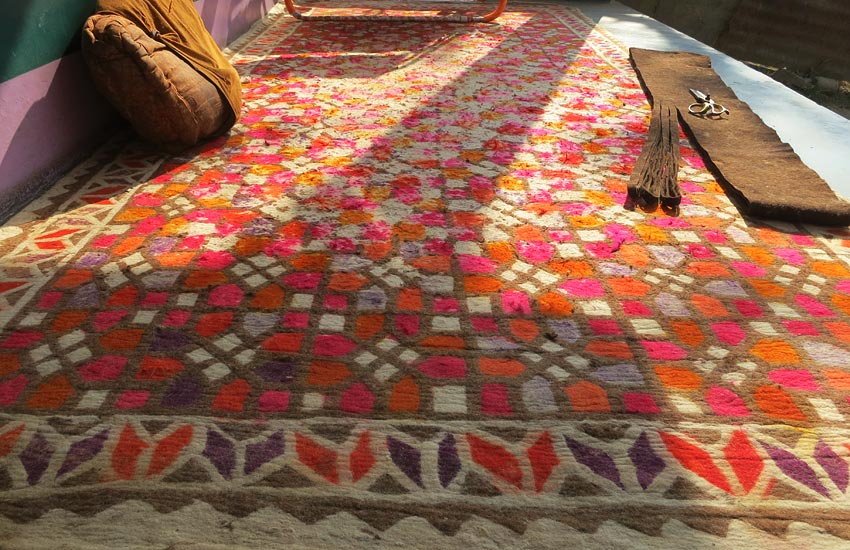Description

Disclaimer: Copyright infringement not intended.
Context
- The first batch of Namda Art products was exported to UK on the occasion of World Youth Skills Day.
- This dying art of Jammu and Kashmir was revived by promoting it under Skill India’s pilot project.
Other Details
- MoS Rajeev Chandrasekhar, of Ministry of Skill Development and Entrepreneurship and Electronics and IT, flagged of the export.
- Under this, an industry-based pilot training program, around 2,200 candidates belonging to six districts of the region were trained.
- This project was a part of Pradhan Mantri Kaushal Vikas Yojana.
Significance of this project
- It is a successful example of a public-private partnership which paved the way for more such partnerships in other projects.
- It will promote skilling, reskilling, and upskilling of Indian youths hence leading to their prosperity.
- It will lead to protection and preserving of this traditional craft of the Jammu and Kashmir region.
- It will support the local economy and will empower the local weavers and artisans by creating new opportunities for employment.
Namda craft
- It is traditional Kraft of Kashmir which involves making a rug which is primarily made of pure sheep wool.
- It is different from regular rug as instead of using normal weaving process, felting technique is used. Hence no weaving is involved in this process.
- Namda means a layer above a regular rug made of old blankets.
- This art is believed to be invented in 11th century by Nomadic tribes of the Central Asian steppes.
- In India the use of this art started from the reign of Mughal emperor Akbar.
- It is under process to get a GI tag certification.

Trigger Point for Conservation
- During 1998 and 2008 the export declined almost 100 percent.
- The possible reasons are –
- Low availability of raw material.
- Lack of skilled manpower.
- Inefficient and inadequate Marketing techniques.
- Minimal use of new techniques and technology.
Process
- First the sheep wool is washed using soap and water.
- Then the fibre, wool, is spread on floor in layers for washing, pressuring (using a tool named pinjra) to flatten it and for drying.
- Next it is either dyed metre by meter OR is decorated with an embroidery pattern.
- Thread is then assembled for use and complex local floral patterns are created using Kashmiri aari embroidery techniques.
Must Read Article:
Skill India
https://www.iasgyan.in/rstv/perspective-skill-india
Pradhan Mantri Kaushal Vikas Yojana
https://www.iasgyan.in/daily-current-affairs/economics
GI Certification
https://www.iasgyan.in/daily-current-affairs/gi-tags
|
PRACTICE QUESTION
The preservation of local art and craft contributes to the enhancing employability opportunities to youth and empowers them. Justify. Also highlight the significance of Pradhan Mantri Kaushal Vikas Yojana in promoting these arts and upskilling youth. (250 words)
|
https://indianexpress.com/article/explained/how-american-bald-eagle-returned-from-brink-of-extinction-8691059/
















